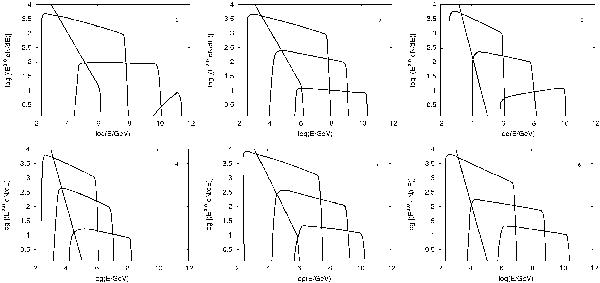Fig. 6

Differential spectra (multiplied by E2), calculated in the respective shock frame downstream, for sets of four oblique consecutive relativistic shocks. Here one sees developed flatter spectra (from left to right respectively) extending to very high energies with a depletion on the lower energies (analogy to Fig. 1). Panel 1: spectra for four consecutive subluminal shocks of inclination ψ = 45° (corresponding to a half opening angle). Panel 2: spectra from two subluminal shocks and two superluminal shocks (ψ = 85°). Panel 3: spectra for two superluminal and two subluminal shocks. Panel 4: spectra for four superluminal shocks all four for the same inclination ψ = 85°. Panel 5: spectra for a sequence of subluminal-superluminal-subluminal-superluminal shocks. Panel 6: spectra for a sequence of superluminal-subluminal-superluminal-subluminal shocks. See complimentary Table 1. Spectra have been shifted vertically to allow a better comparison.
Current usage metrics show cumulative count of Article Views (full-text article views including HTML views, PDF and ePub downloads, according to the available data) and Abstracts Views on Vision4Press platform.
Data correspond to usage on the plateform after 2015. The current usage metrics is available 48-96 hours after online publication and is updated daily on week days.
Initial download of the metrics may take a while.








